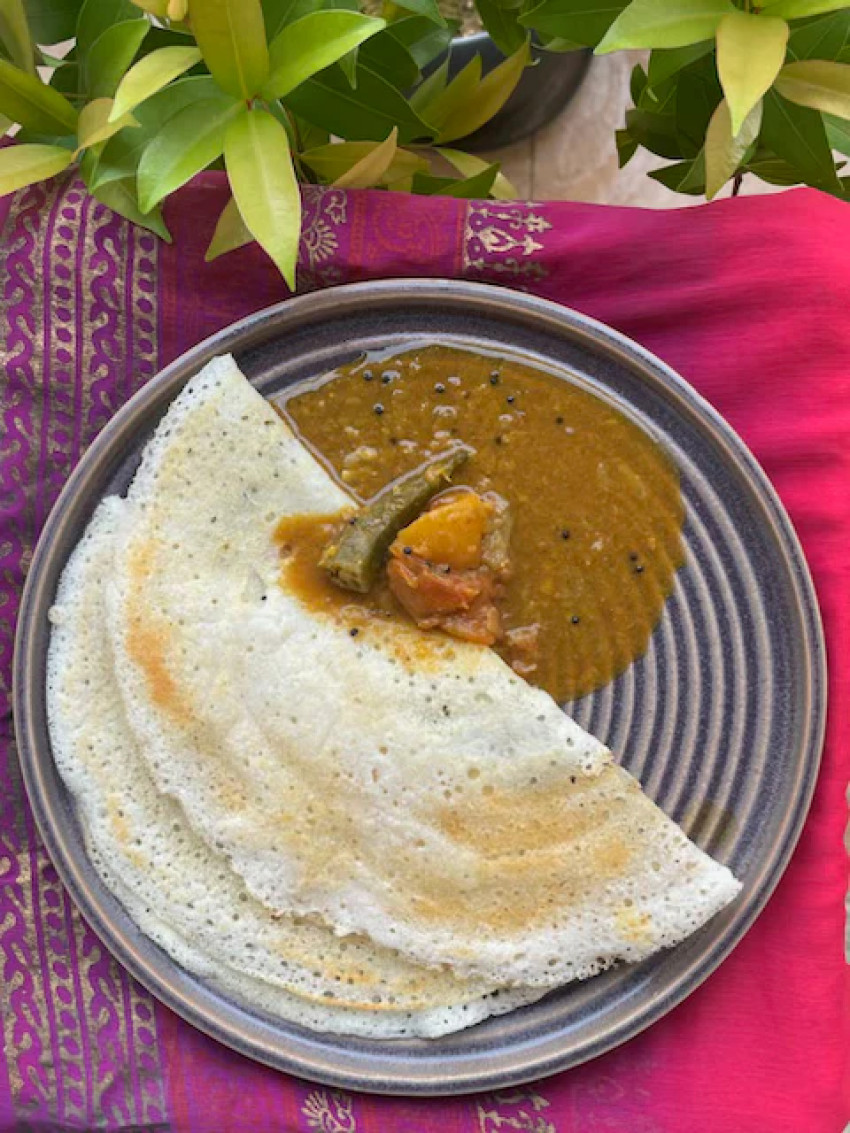
Sambar is an emotion. That’s the easiest way to put it. Each state, especially in the southern part of India, boasts about their flavorful Sambar and it’s always a debate when it comes to ‘Which Sambar is the best’. The flavours are so unique, passing each state, it gives a different flavour to the meal. What makes it unique is the masala being used and the ingredients and quantity used in the masala.
Origin of Sambar
Sambar is a popular South Indian dish that is believed to have originated in the southern region of India, particularly in the state of Tamil Nadu and the state of Kerala. Its history is closely tied to the rich culinary traditions of these regions. The exact origin of sambar is somewhat debated, but it is widely believed to have been developed by the Marathas (a community from western India) who settled in the southern regions of India during the 17th century. These settlers adapted to the local cuisine and ingredients, incorporating toor dal (pigeon pea lentils) and a variety of vegetables to create a unique dish, which eventually became known as sambar. The name "sambar" is thought to have originated from the Tamil word "champaaram" or "champu," which referred to a mixture or combination of various ingredients. Over time, this term evolved into "sambar," reflecting the essence of the dish.
Each state, different taste
Sambar is a popular South Indian dish, and while it shares some common characteristics across the southern states of Kerala, Karnataka, Andhra Pradesh, and Tamil Nadu, there are distinct regional variations in the way it's prepared and its taste.
Kerala sambar often includes grated coconut, which gives it a distinct creamy texture and flavor. It may also feature locally grown vegetables such as yam and drumstick.
Karnataka Sambar or Mysore sambar as it’s called features a unique blend of spices, including fenugreek seeds, grated coconut, and a specific spice mix known as "Mysore sambar powder." Vegetables like brinjal (eggplant) are commonly used in Karnataka Sambar. It's slightly more on the sweeter side.
Andhra Sambar is known for its fiery spiciness. It incorporates a generous number of red chilies and tamarind, resulting in a distinctly hot and tangy flavour. Dried red chilies are ground into a fiery chili paste. The spiciness and tanginess of Andhra Sambar set it apart from other variations.
Tamil Nadu Sambar typically uses a sambar masala that includes spices like coriander, cumin, and red chilies. It is often made with a base of toor dal and tamarind pulp. A wide variety of vegetables are used, with common choices including shallots, drumstick, and brinjal. It has a balanced, savoury flavour profile with a tangy kick from tamarind.
Each state's Sambar reflects the local ingredients, culinary traditions, and flavor preferences. While all versions share the core concept of a lentil-based stew with spices and vegetables, the regional variations make each type of Sambar a unique and delicious experience.
Sambar in the meals
If Sambar is served on the menu, that would be more than enough for a meal. Be it any state, a full course traditional rice meal is incomplete without Sambar. For breakfasts, dosa or idli is a staple in some south Indian states, and sambar is a must to have side with it. Dishes are named after Sambar to speak of its importance such as Sambar vada, Sambar rice, basically vada or rice immersed in sambar. Apart from having as an accompaniment to meals, Sambar is also served as a soup for sambar enthusiasts to savour.
The popularity of Sambar has grown nationwide that it’s not just consumed in the southern states, but also many north Indian states have sambar sometimes with their meals.
Sambar masala, the differentiator
Earlier we spoke about how usage of certain ingredients such as coconut and the locally grown vegetables makes each sambar different. However, a differentiator in taste also credits to the masala used in making the Sambar.
In the olden days, Sambar masala was freshly prepared at home by the elders, and they use the ingredients that are a must have and others to improvise the taste according to how they please. Even now, some prefers preparing them at home, whereas others resort to packed ones available in the market.
Ingredients such as Coriander seeds, dried red chillies, split yellow lentils, split chickpeas, turmeric powder, cumin seeds, black peppercorns, fenugreek seeds, asafoetida, curry leaves are used in the recipe. Dry roast all the ingredients, mix well and grind them together to make a fine powder. Sambar masala is ready. Please note that depending on the place you are in, there would be slight variations to this, which includes deletion or introduction of a few ingredients as well as preparation method. Eventually, it’s a flavorful fine powder, the Sambar masala which is a key ingredient in preparing sambar.
Storing the masala
Transfer the sambar powder to an airtight container. Make sure the container is clean and completely dry to prevent moisture from getting in. Store the container in a cool, dry place, away from direct sunlight. Keep the container tightly sealed when not in use. Exposure to air can cause the spices to lose their flavor more quickly. When scooping out sambar powder, make sure to use dry, clean spoons or measuring utensils to prevent any moisture from being introduced into the container. Properly stored, sambar powder can retain its flavor and potency for several months to a year. Homemade sambar powder without any added preservatives ideally last for 3-4 months.




